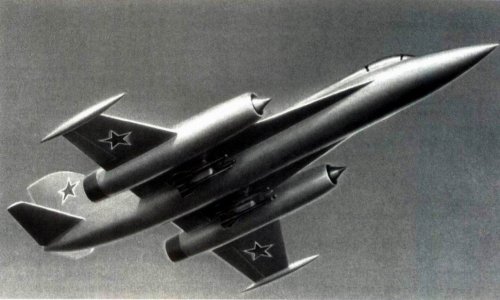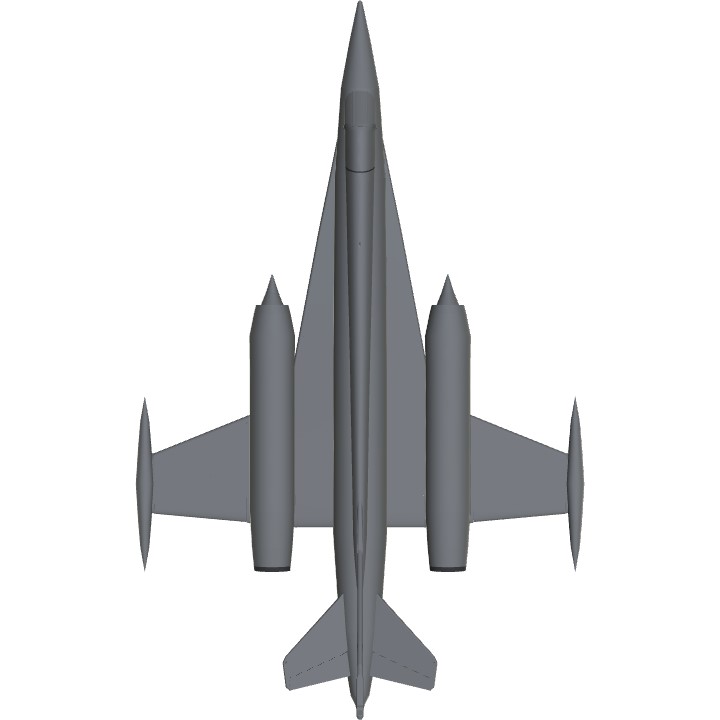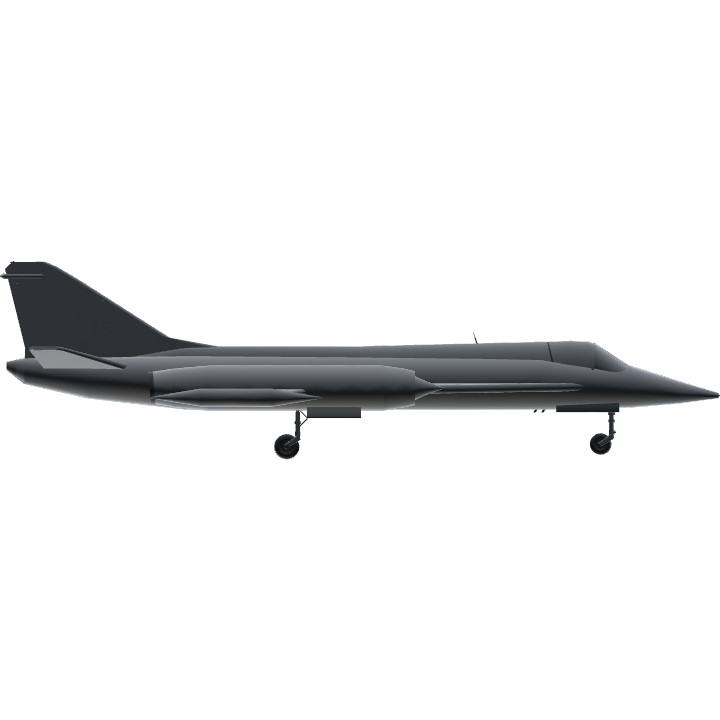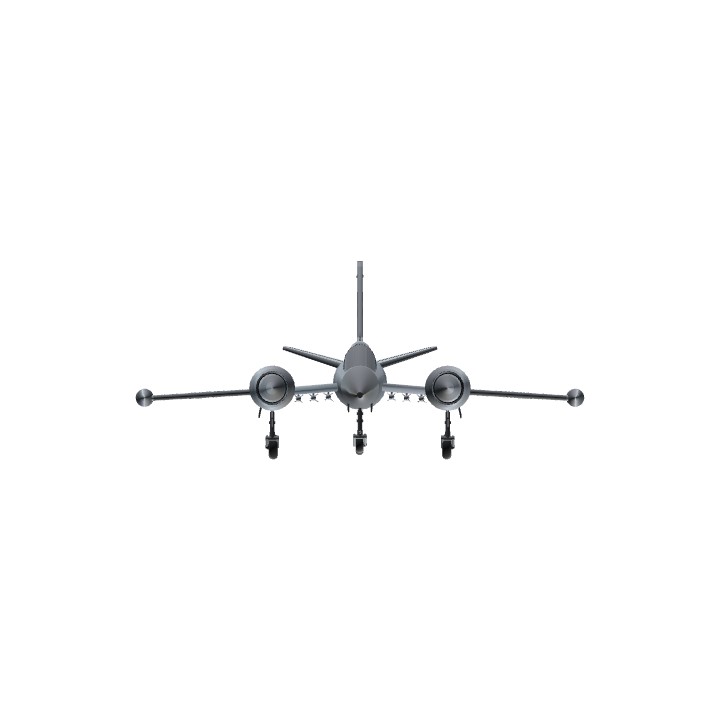enjoy!


the Yakovlev Yak-45 was the designation for a series of design studies in 1973-1974 for a single-seat fighter. It lost to the Mikoyan MiG-29.
Yak-45 was a twin-engine single midwing normal aerodynamic configuration with a single vertical tail and bicycle landing gear. Engines were located in almost half the wingspan, the two main wing spar in this place took the form of half-ring motors covering the bottom. This arrangement gave certain advantages. First, this arrangement greatly increased engine durability machine, reducing the chance of damage to both of the two motors. Second, simplify maintenance, opening the approach to engines with virtually any party. In addition, simply solved issues replacement engines. There were also the aerodynamic advantages: it reduces the loss of inlet air intakes and at the nozzle exit.
Design and development
In the early 1970s the Soviet VVS expressed a desire to replace the MiG-21 with a more modern twin-engine fighter with greater air-superiority capabilities. Yakovlev's entry was a series of designs submitted under the designation Yak-45.
The Yak-45 would have been powered by two Favorski Type 69 non-vectoring turbofan engines with afterburners. Derived from the R-28, they were rated at 8,000 kg (17,635 lb) thrust each. The engines would have been positioned ahead of a large delta wing, with an additional large canard foreplane, giving the aircraft an appearance similar to the Saab Viggen.
The design was rejected in favor of the MiG-29.
In 1978-1979 Yakovlev attempted to restart development of the Yak-45 by designing a V/STOL version with two vectoring-thrust nozzles and two RD-38 jets. This aircraft was not developed because the problem of roll associated with the loss of one engine during VTOL operation was never solved.






Specifications
Spotlights
- AircraftoftheRedStar 5.4 years ago
- Trainzo 5.4 years ago
- Mustang51 5.4 years ago
- BuiltBionixInd10 5.4 years ago
- Shimamurahougetsu 5.4 years ago
General Characteristics
- Created On Windows
- Wingspan 41.0ft (12.5m)
- Length 65.6ft (20.0m)
- Height 18.1ft (5.5m)
- Empty Weight 18,289lbs (8,295kg)
- Loaded Weight 18,289lbs (8,295kg)
Performance
- Power/Weight Ratio 5.898
- Wing Loading 41.7lbs/ft2 (203.6kg/m2)
- Wing Area 438.6ft2 (40.7m2)
- Drag Points 9268
Parts
- Number of Parts 532
- Control Surfaces 7
- Performance Cost 1,891





@OGoneZ thanks! :)
Good!Get upvoted
@Mustang51 thanks friend!
This is awesome! It looks great and flies lovely
@Diloph thanks boi!
Whoa!
@Trainzo thanks :)
Very nice plane . Great job .
@AceOfSpade hahaha I put it up fast and forgot about that, thanks for the comment!
So, I might not be an engineer, but I do think the ailerons are inverted. Awesome craft though!!
@Evenstsrike333
@Lorileni
@AircraftoftheRedStar thanks! :)
Excellent! Even though the landing gear is tricycle instead of the stated bicycle, the aircraft is gorgeous!